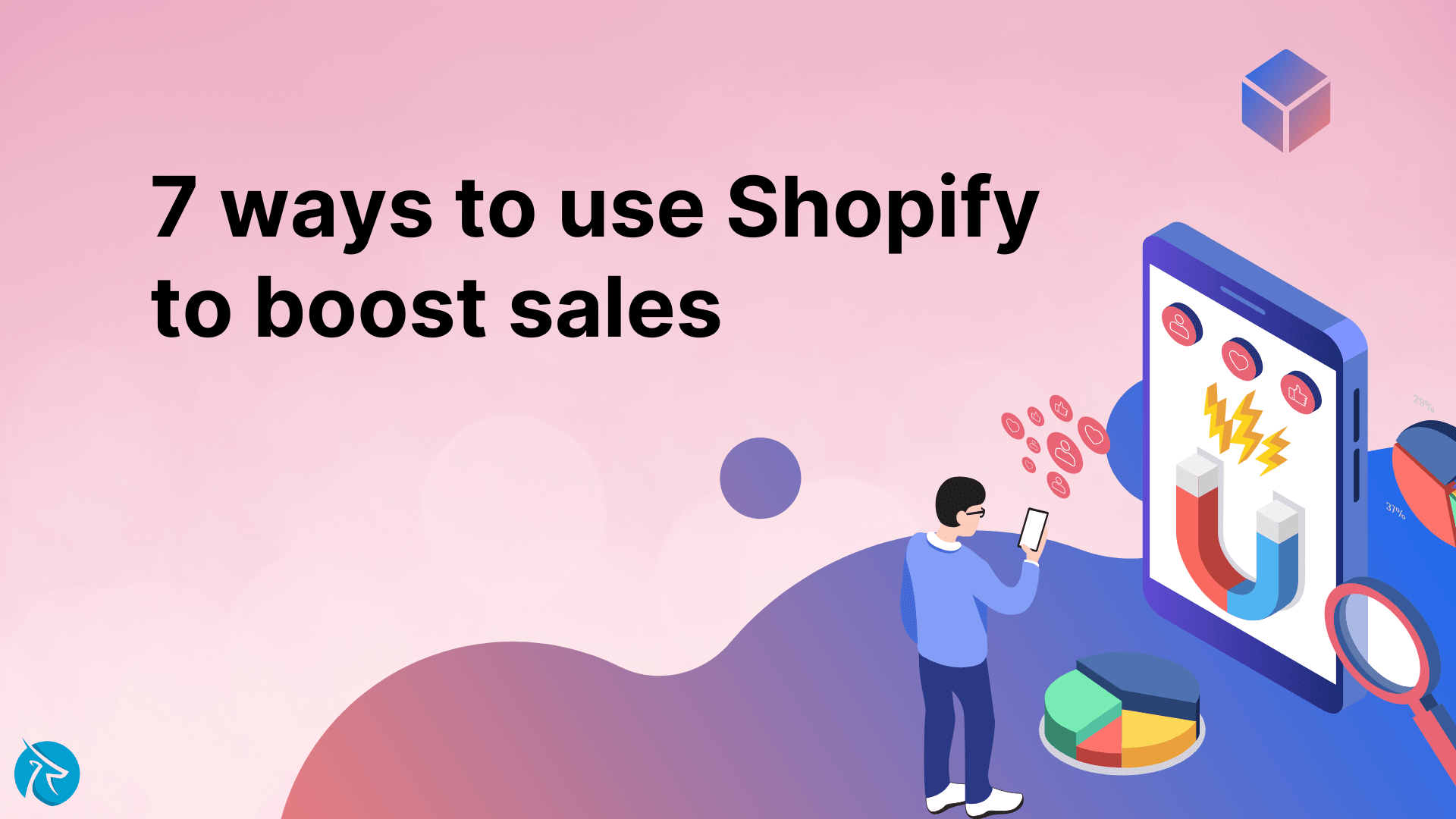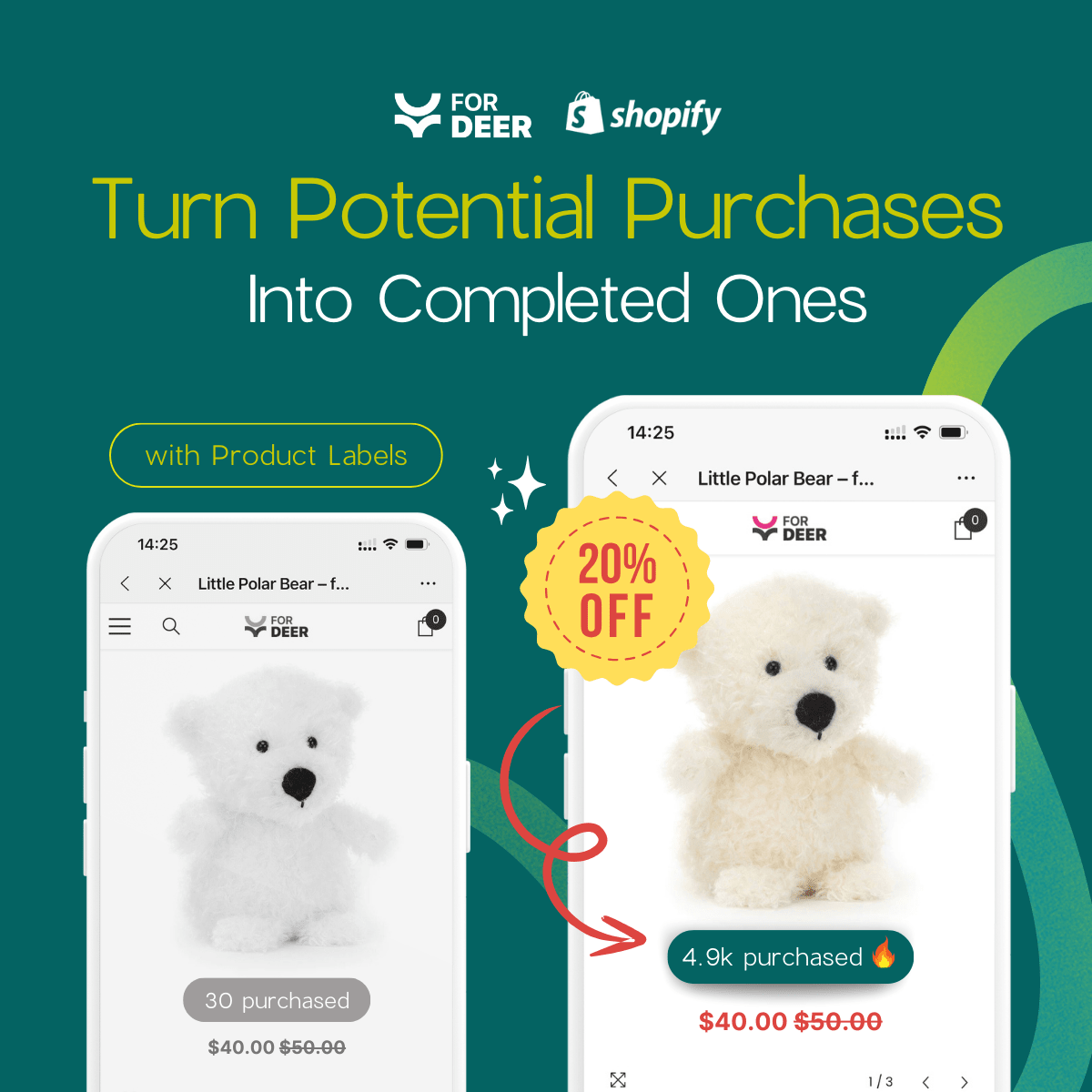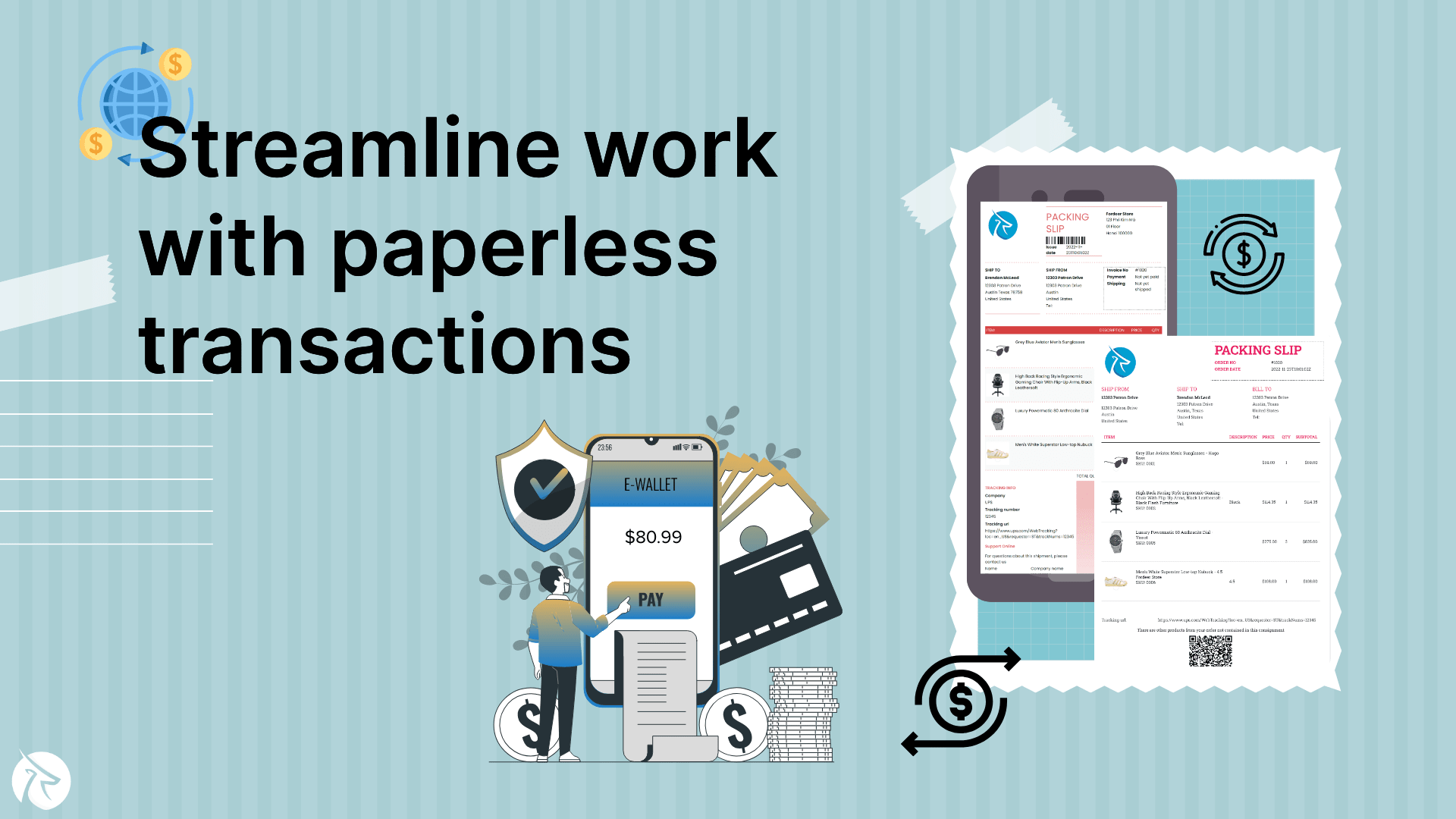7 ways to use Shopify to boost sales for your eCommerce

Unlocking the full potential of Shopify is a game-changer for any e-commerce business. In this guide, Fordeer will explore seven powerful strategies to harness the capabilities of Shopify and supercharge your sales.
From optimizing your product listings to leveraging advanced marketing techniques, we'll show you how to transform your Shopify store into a sales-generating powerhouse.
Some things you should know about eCommerce currently
It's common knowledge that eCommerce offers substantial revenue potential. Expanding beyond the confines of a local brick-and-mortar store allows you to reach customers across your state, country, and even globally. This vast market opportunity benefits all sellers.
However, the digital landscape of online business also means that you'll encounter significant competition for your eCommerce store, as everyone else can tap into the global market, too. Today's e-commerce entrepreneurs must contend with formidable competitors, including industry giants like Amazon, in their quest for success.
Therefore, you'll need a well-thought-out strategy to ensure the success of your Shopify store, from the initial sale to delivering an exceptional online shopping experience. Utilizing the right apps to enhance sales is one valuable tool to incorporate immediately. However, if your goal is to increase traffic, boost sales, and outperform competitors on your e-commerce platform, you'll require more than that.
Why your Sales Might Be Slow…
Even with decent traffic to your Shopify store, you may experience sluggish sales and a plateau in revenue. Several factors could be contributing to low Shopify sales, but the most common ones include:
- Your landing page needs to be mobile-friendly: With mobile commerce projected to account for 40.4% of eCommerce sales by 2024, not catering to mobile users can lead to missed opportunities.
- Unconvincing product page content: Your product and landing pages should compellingly showcase your eCommerce business, encouraging prospects to purchase. High prices or unappealing products can leave your shopping cart empty.
- Lack of trust from your target audience: Customers can doubt product quality, payment security, and reliable shipping, significantly impacting your online store's performance.
- Absence of a conversion optimization strategy: Turning leads into prospects and prospects into customers requires strategies like SMS and email marketing, exploring Shopify app options, and implementing retargeting techniques.
- Neglecting a nurturing marketing funnel: Nurturing is essential for conversions. It can limit your business insights if you understand where your customers come from and what motivates them to engage with your products.
- No promotions, loyalty programs, or special offers: If you give discounts and incentives, it can help you stand out and attract customers.
If any of these issues resonate with your Shopify store, don't worry. Many Shopify owners face similar challenges, and the following intelligent strategies can help address them.
7 ways to use Shopify to boost sales
Having good intentions alone won't guarantee steady Shopify sales. You must implement a sales strategy to engage every potential customer and boost traffic and revenue. The following systematic method will guide you in achieving these goals.
Incorporate Popups on Your Website
Popups, which are small promotional windows that appear over or alongside your main content, are a valuable asset in any marketing plan. They elevate conversion rates and boost your average order value, enhancing the quality of each potential customer.
Studies reveal that the "average conversion rate for all popups is 3.09 percent," whereas the "average conversion rate for top-performing popups is 28 percent." With the convenience of installing them through an app, there's minimal justification for not utilizing them.
You can consider Fordeer: Sales Pop Up ‑ Popups. This tool has many functions to enhance sales, establish trust, boost revenue, and empower your store. Your store can engage visitors by evoking a sense of urgency to amplify your conversion rates and drive more sales. Besides, Fordeer: Sales Popup ‑ Popups help foster trust by showcasing real-time purchase activity and visitor counts.
Utilize popups featuring discounts to expand your email marketing list, capture exit intent, and convert potential leads, all while enjoying full customization to align with your brand.
You can read more: The Power of Sales Popups: Boosting Conversions and Sales
2. Utilize SEO for Increased Website Traffic
Search Engine Optimization (SEO) refers to the techniques to help improve website ranking. This ensures that your blog posts, web pages, and new product listings capture the attention of search engine users, which is often the initial step in attracting actual human visitors. To acquire organic traffic – that which originates from search queries rather than paid advertisements – SEO is your starting point.
Effective SEO entails several fundamental tasks. Firstly, ensure all your listings have comprehensive metadata by using tags and descriptions to convey the content's purpose to search engine bots. Regularly conduct audits to identify and rectify inaccuracies and broken links, which can diminish your website's quality. Lastly, stay informed using tools like Google Trends or Google Keyword Planner to determine relevant content for your website.
3. Collaborate with Social Media Influencers for Product Promotion
Social media platforms serve as potent advertising channels, and influencers are often eager to assist. Many online leads originate from platforms like Facebook, Instagram, and TikTok. Therefore, it's crucial to establish a presence there through influencer marketing.
The basic concept involves providing a product to influencers for promotion, either in exchange for the product or a commission. They guide their followers to your online store, and their followers make purchases from you. Additionally, ensuring your product listings are comprehensive, address common FAQs, and offer the necessary customer support to build trust with potential customers is vital.
4. Paid Advertising Campaigns (PPC)
Employing paid advertising, such as Google Ads or Facebook ads, is a common approach for those aiming to expand their store's reach beyond organic traffic and social media marketing. However, if you want to attract more visitors, ensuring your ad campaigns are optimized for conversions is crucial.
To achieve this, prioritize the visuals and ad copy that potential customers encounter initially. Once you start generating leads, invest in segmentation: identify where your traffic is coming from and their specific preferences. This enables you to tailor your ads to the right audience. Be prepared to make adjustments as needed.
5. Enhance Your Landing Pages
As mentioned earlier, mobile optimization is essential in today's digital landscape. Your homepage, landing page, and other eCommerce destinations must be user-friendly for individuals conducting searches and completing purchases on their mobile devices.
Moreover, optimizing the user experience is paramount.
A positive customer experience extends beyond standard content marketing elements like high-quality product images and detailed descriptions. It also encompasses considerations like site design, strategic placement of form fields, button positioning, and overall website functionality to ensure a smooth purchasing process without glitches.
6. Encourage Referrals and Customer Feedback
Utilizing referral incentives can significantly elevate brand recognition and drive website traffic. Similarly, customer reviews are pivotal in reassuring new customers of your brand's reliability and trustworthiness.
For those seeking both customer reviews and new clientele, it's essential to incentivize loyal customers and showcase ample social proof through product reviews. Here's a pro tip: You can create a Referral Campaign within your email marketing platform, sending messages a designated number of days after a purchase. In these messages, inquire about their satisfaction with the product, incorporating two hyperlinked images of a thumbs-up and a thumbs-down.
Clicking the thumbs-down image can open a pre-addressed email to customer support, while clicking the thumbs-up image can prompt a Google review form to appear. It's a win-win strategy!
7. Implement Upselling and Cross-Selling
Upselling involves persuading customers to opt for a better, more expensive version of the product they originally intended to purchase. Cross-selling, on the other hand, demonstrates how your other products can complement the one they're interested in.
Both upselling and cross-selling techniques maximize the checkout process and boost your revenue, particularly as paid advertising costs continue to rise. If you can achieve the same outcomes as online advertising through simple apps, it's a compelling reason to embrace these strategies.
Conclusion
In conclusion, Shopify offers a dynamic toolbox for e-commerce success, and by implementing the seven strategies outlined in this blog, you can unlock its full potential. Remember, success in e-commerce often comes down to staying adaptable and being willing to experiment.
So, don't hesitate to explore new features, apps, and techniques that align with your business goals. With Shopify as your partner, the possibilities for growth and profitability are virtually limitless. Here's to your continued success and prosperity in online retail!
FAQs
What is Shopify, and how can it help boost my sales?
Shopify is an e-commerce platform offering many tools and features to help you quickly build your online. It offers various strategies and applications to increase sales and grow your business.
Do I need technical skills to use Shopify effectively?
No, Shopify is designed to be user-friendly and doesn't require advanced technical skills. It offers a user-friendly interface and many resources to help you get started.
What are some basic strategies I can implement on Shopify to increase sales?
Basic strategies include optimizing product listings and popups, improving website design, and leveraging SEO techniques. Integrating social media and email marketing will help boost website traffic and sales.
How can I effectively use product customizer apps on Shopify?
Product customizer apps allow you to showcase product options and help customers customize their purchases. Providing clear and detailed product customization choices is essential to enhance the user experience.
What are the benefits of using the Sticky app on Shopify?
The Sticky app can help maintain customer interest by keeping the 'Add to Cart' and 'Checkout' bars visible as customers browse your website. This feature ensures that products remain accessible and can lead to increased conversions.











